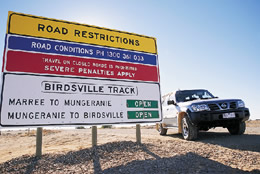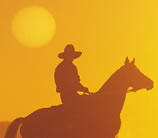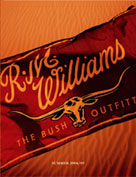ADVENTURE
Birdsville or bust
Story and Photographs: Paul Myers
Of all Australia's outback tracks, the Birdsville Track is rightly regarded as the king. Not because it's the toughest road in Australia, which it certainly isn't; not because it's the most scenic - there are numerous other outback journeys with more visual delights; and not because it's the most remote - any number of other tracks are 'further out' and necessitate a better vehicle, equipment and preparation.
 No,
the Birdsville Track is at the top of quintessential outback journeys because
of its fascinating history, especially during the era when outback mailman
Tom Kruse plied his truck between Marree and Birdsville, but also as a droving
route for Channel Country cattle on their way to market. Largely because
of Tom Kruse, the Birdsville Track gained a reputation as the ultimate road
challenge in the days before four-wheel-drives and inland touring became
popular. The other reason for its fame is - yes, you guessed it - because
the pub at the start (or end, depending where you begin your journey) is
undoubtedly the best-known and most photographed watering hole in Australia.
No,
the Birdsville Track is at the top of quintessential outback journeys because
of its fascinating history, especially during the era when outback mailman
Tom Kruse plied his truck between Marree and Birdsville, but also as a droving
route for Channel Country cattle on their way to market. Largely because
of Tom Kruse, the Birdsville Track gained a reputation as the ultimate road
challenge in the days before four-wheel-drives and inland touring became
popular. The other reason for its fame is - yes, you guessed it - because
the pub at the start (or end, depending where you begin your journey) is
undoubtedly the best-known and most photographed watering hole in Australia.
All this has turned the Birdsville Track into one of the nation's most popular inland tourist routes; a road that enables people who may not have the confidence, time or experience to tackle difficult and remote outback tracks - like the Canning Stock Route or the Cape York trek - to experience the real and remote outback, to imagine themselves as modern-day pioneers, and to understand how challenging is everyday life away from modern facilities and services.
Some 50,000 people (20,000 to 25,000 vehicles) travel up or down the
Birdsville Track each year. When you consider that few make the trip in summer,
when temperatures are almost always in the 40s, there's a steady flow of
vehicles during the milder, drier months from April to October. Not that
there's ever anything that resembles 'traffic'. On any given day in mid-year
two or three hundred vehicles travel the Birdsville Track, so in the event
of a breakdown or accident, help is usually less than an hour away. Only
in one or two places, where the track crosses and dips between sandhills,
does another vehicle appear suddenly. At other times there's always the tell-tale
warning, often several minutes in advance, of a cloud of dust on the horizon. ![]()
Full story: OUTBACK, December/January 2003


